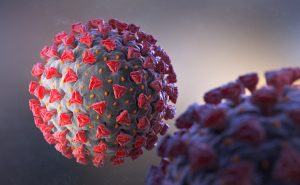In the United States, “living with COVID” has become synonymous with either heightened personal responsibility or a return to pre-pandemic normalcy. The U.S. has been a leader in developing efficacious vaccines, therapeutics, and high-quality masks. Yet, almost two-thirds of Americans have not received their first booster shots, and between 300 and 400 people are dying on average each day with the virus. With the dropping of mask mandates, compensatory ideas of cleaning indoor air and improving ventilation to limit the spread of the virus remain unevenly implemented by institutions and businesses.
Developed and highly developing countries in the Asia-Pacific region that no longer subscribe to zero-COVID policies are assumed to have largely moved on from the virus, just as the United States and Western Europe have. Or they are assumed to have policies like China, where frequent lockdowns, significant quarantines, mass testing, and heightened technological surveillance remain largely in place. In reality, these “Third Way” countries – New Zealand, South Korea, Japan, Taiwan, Singapore, and Australia – have learned to live with COVID-19, but not just by returning to the many pre-pandemic things their citizens have enjoyed. They also rely on common-sense practices that they benefited from earlier in the pandemic to protect the vulnerable from the most severe effects of the virus.
Just like the United States and Western Europe, Third Way countries have lifted or scaled back many pandemic restrictions, especially international travel restrictions. Australia has lifted all COVID-19 restrictions on international travel. Singapore and New Zealand are also open to visitors, with some restrictions on unvaccinated travelers. Just like the United States, Singapore and Taiwan no longer require pre-departure COVID-19 testing for inbound passengers. South Korea is also mostly open, while maintaining the requirement for pre-departure COVID-19 testing for all inbound passengers. Japan and Taiwan are more conservative with opening their borders, even as the former has opened its borders for group travelers. Taiwan has lifted pre-testing requirement and reduced the number of quarantine days for inbound travelers.
All Third Way countries have eschewed lockdowns for months and many have scaled back contact tracing and quarantine measures for those exposed to the virus.
The loosening of restrictions and the more infectious Omicron sub-variants have resulted in the substantial spread of the virus in the past few months, especially for Asia-Pacific populations that were not previously exposed to the virus. Yet, the overall death rates from COVID-19 remain far lower in these Third-Way countries. According to the John Hopkins University’s mortality analyses tracker, Third Way countries show comparatively far lower deaths per 100,000 of the population: Australia (49.56), Japan (27.18), New Zealand (35.81), Singapore (26.37), South Korea (49.62), and Taiwan (39.04) compared to the United States (314.31), United Kingdom (275.16), and France (235.94).
More critically, high vaccination and booster rates likely reduced severe outcomes from COVID-19 in Third Way countries. All Third Way countries bought time earlier on in the pandemic by keeping the virus largely at bay, which meant a substantial number of their population had received at least one shot of the vaccine by the time they shifted their strategy to living with the virus. Furthermore, they continue to stress high vaccination and booster rates as critical to their strategy of living with the virus.
According to the New York Times vaccination tracker, more than three-quarters of Singaporeans, Taiwanese, Japanese, and South Koreans have received a booster shot. More than half of Australians and almost 65 percent of New Zealanders have also received a booster shot. In contrast, slightly more than a third of Americans have received their booster shots. Singapore’s meticulous record-keeping also reveals that the non-fully vaccinated residents are almost 10 times more likely to die of COVID-19 than their counterparts who have received three or more shots.
Third Way countries require precautionary face-coverings in many indoor spaces, which may have helped lower the number of vulnerable members of society who contracted the virus. Even Singapore, which has lifted almost all COVID-19 measures, still requires masking in practically all indoor settings, and so do Taiwan and South Korea. New Zealand requires indoor masking in most education settings and healthcare facilities as well as on public transportation. Most Australian states require masking for people over the age of 12 in most healthcare settings and public transit. Most Japanese practice indoor masking, even though they are no longer required in most situations.
Australia and New Zealand have also promoted measures to clean the air indoors, which helps to reduce the amount of virus in indoor spaces. A few Australian states have distributed tens of thousands of air purifiers to schools, while stressing the importance of improving ventilation in schools. New Zealand had already distributed hundreds of air purifiers to schools as of April 2022, aiming to provide air purifiers to all 2,500 state and state-integrated schools. A Tasmanian school in Australia has reportedly recorded no onward transmission of the virus by not only requiring masking but also cleaning the indoor air thoroughly with Corsi-Rosenthal boxes in all classrooms and restrooms.
Policymakers in the United States and China alike might find Third Way countries’ experiences helpful in calibrating their approach toward the virus. To be clear, both countries have engaged with many of these measures throughout the pandemic. The latest U.S. CDC guidelines, for example, encourage communities to take steps to increase ventilation and improve filtration in public places. Encouraging more to get vaccinated and boosted, directing federal and state resources to improve indoor air, and keeping indoor mask mandates as a viable policy option should be considered by policymakers in the United States.
For China, managing border controls more flexibly and minimizing lockdowns while introducing more efficacious vaccines and focusing on cleaning indoor air may help the country live more sustainably with the virus. As Third Way countries show us, engaging thoughtfully with the virus and its multiple ramifications for society is critical to responsibly and sustainably living with it.

































